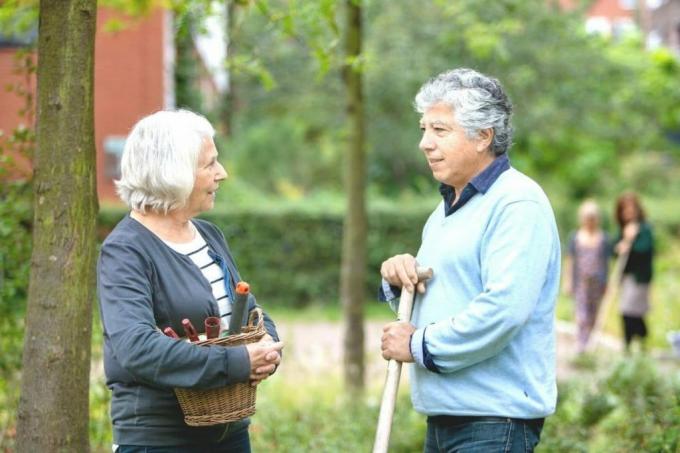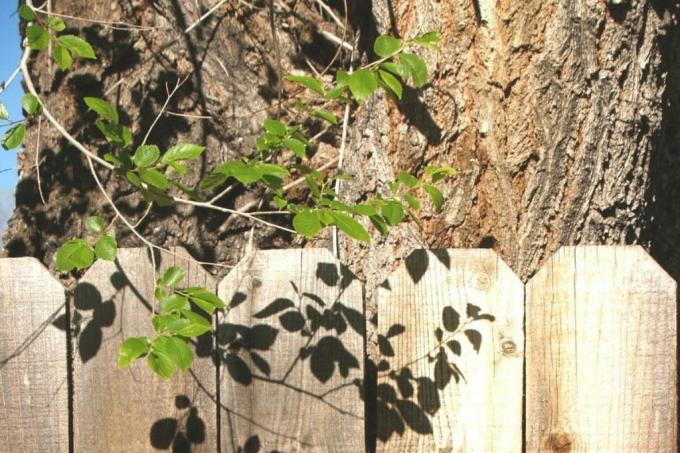
table of contents
- When is a tree too tall?
- Statute of limitations
- What to do when the trees are too tall
- Legal procedure
- That’s allowed
- frequently asked Questions
Is there anything better than enjoying the sun in the garden? It is annoying when the neighbour's trees are so big that hardly any rays of sunlight can penetrate you. But what can you do if the trees on the neighboring property are too tall? We'll enlighten you.
In a nutshell
- Limit distance regulated in state laws
- The right to removal becomes statute-barred
- Prospect of removal only in the event of severe impairment
When is a tree too tall?
There is no uniform regulation in Germany when a tree is considered too tall. However, the individual federal states provide rules for coexistence in neighbors. The neighboring laws of the individual state laws also regulate the distance a plant must be from the neighboring property. The required limit height depends on the height of the crop. The exact dimensions vary from state to state. In Saxony, for example, a maximum distance of 2 meters is necessary, while in Baden-Württemberg it can be as much as 8 meters. the
exact limit distances can be found in the respective legal norms. In general, the higher and more spreading the trees, the greater the distance to the neighboring property must be.
Note: This text does not constitute legal advice. It only summarizes information about legal regulations. To be on the safe side, consult an expert before taking any steps.
Statute of limitations
If the trees on the neighboring property are too tall, the neighbor can first assert claims to have them cut back or removed. However, this claim becomes statute-barred. The statute of limitations is in turn regulated by the state laws. It varies between 2 and 6 years, but is usually around 5 years. This is a binding deadline. Once it has gone out, the trees on the neighboring property can no longer be removed. If you buy a plot of land that already has large trees, you buy the expired deadline at the same time. The trees cannot be removed even if the owner changes.
Note: The time at which the period begins is regulated differently in the state laws. Sometimes the time of planting applies, sometimes the time at which the maximum height was exceeded.
What to do when the trees are too tall
If you have checked the legal situation and have determined that the legal requirements have not been complied with, you have the following options:
- in a friendly conversation, ask the neighbors to cut back
- if you do not understand, seek legal advice
- insist on necks in court

Tip: Talk to your neighbor if he has complied with all legal requirements. Perhaps he is still cutting the trees back a little out of friendliness.
Legal procedure
If it is not possible to reach an out-of-court agreement, you can in principle assert the establishment of the prescribed distance. However, this does not automatically speak in favor of pruning the tree. You are only entitled to a cut back if your own property is after § 906 para. 2 sentence 1 BGB and Section 1004 of the German Civil Code is significantly impaired in use. Whether there is a significant impairment depends on the individual situation. The following situations can be mentioned as examples:
- Ordinary activities such as reading or playing are only possible with artificial light
- significant dangers for the security or the existence of the building (incl. sound evidence)
- Tree completely crooked
If the points apply, you can obtain the pruning of the trees on the neighboring property with a permit. However, if all legal provisions have been complied with, a cut back can hardly be achieved.
That’s allowed
In some cases there is no need to remove the entire tree. There are some things you can do yourself against trees that are too big. This includes, for example
- Removal of tree roots growing on your property (Section 910 BGB)
- Cutting off overhanging branches from the border
- in dangerous situations and after repeated requests, independent removal of the source of danger

However, before you act independently, you must give your neighbor a reasonable period of time to remove it. In addition, an actual impairment of your property is a prerequisite for your actions. This includes, for example, that you cannot set up a swing as planned because of the protruding branches. Leaves and seeds, on the other hand, count as customary in the area and therefore usually do not represent a significant impairment. However, once there are fallen leaves on your property, you are now responsible for removing them.
Note: Consult a lawyer beforehand. In the worst case, you face consequences if you accidentally remove too much.
frequently asked Questions
Find out more from the land surveying or land registry office. If necessary, your property will then be re-measured.
Border trees belong equally to both parties. You are therefore both responsible for the editing and have to come to an agreement. An exception is when the parties agree that one person is entitled to the tree alone.
Not as long as the fruit is hanging on the tree. During this time, the fruit belongs to the person on whose property the tree is. This can get the fruit with a special picking device. As soon as it falls off, it is considered windfall and then in turn belongs to the person on whose property it is. So once the fruit is on your property, it is yours.



